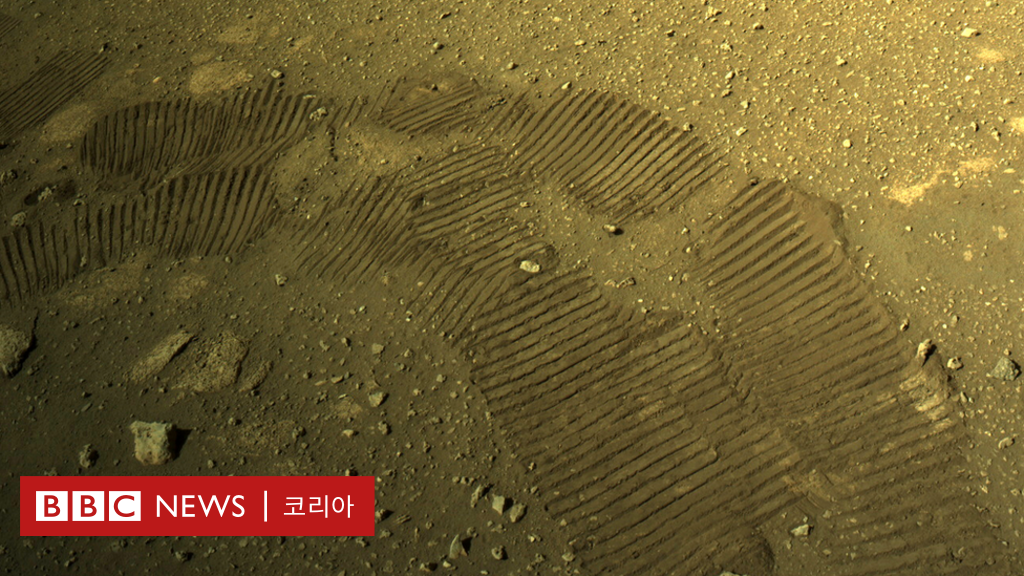- Jonathan Amos
- BBC Science Reporter

Photo Source, NASA/JPL-CALTECH
Percivirance’s wheel marks left on Mars
NASA’s Mars exploration rover Perciviarence has begun its full-scale Mars exploration activity.
The first movement, Perciviarence, traveled about 6.5m.
Despite the short distance, NASA scientist Katie Morgan said the move was of great significance.
Morgan told the BBC, “It’s still a technical check, but from the moment you’re in motion, it can be considered a formal space exploration activity.”
It was two weeks ago that the 1 ton Percivierence landed on Mars. Engineers have spent a long time inspecting the complex systems and robotic arms of Percivience.
Photo Source, NASA/JPL-CALTECH
Percivience had far more sturdy wheels than previous probes.
But the moment everyone has been eagerly awaited was the Percipherance moving by rolling wheels. Last Thursday, we finally started our first move. The Persian Persistence rotated about 150 degrees and succeeded in moving forward and backward.
Photo Source, NASA/JPL-CALTECH
“You can see the traces left on Mars,” said Anais Caripan, a mobility engineer on the Persivirance. “It’s the first time I’ve been so happy to see them.”
“It’s a great achievement for this mission. It was successful on Earth, but it was the first on Mars. It was our ultimate goal, and it’s a goal that many people have been working on for years.”
The Persivirance has settled in nearby Jeero-gu to explore the traces of life.
This exploration, which requires a movement of about 15 km, will take one year on Mars (about two years on Earth) in the future.
Researchers are trying to find traces of ancient creatures by acquiring various Martian geological specimens.
The Persivirance is capable of the fastest speed of any probe that NASA has ever sent to Mars. This is thanks to the improvement of the automatic navigation system, which is independent of the rotational speed of the wheel.
Persistence can take pictures of the road ahead. In the past, probes had to stop moving in order to shoot, but Percivience is possible while moving.
